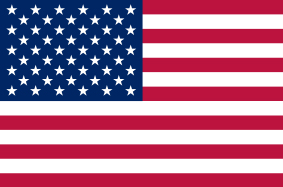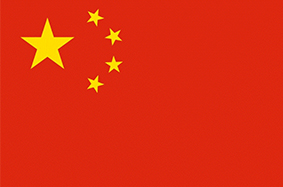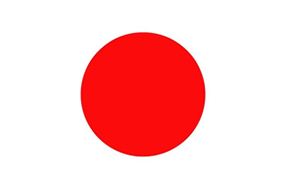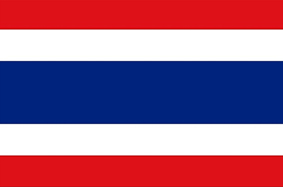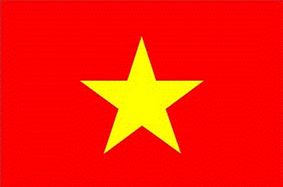-
Are there any side effects of fat grafting?
When fat grafting is done poorly by an inexperienced doctor, it can cause bumps on the skin and make the face look bloated.
W-ell enriched fat grafting is known as a very safe procedure since it is harvesting the patient’s own cytos.
However, the fat may not survive as expected or patients could look a little unnatural in the case of air exposure when extracting fat or from cannula and also needle infections.
We have the latest technologically advanced medical equipment and facilities at Wonjin, therefore you do not have to worry about these side effects mentioned above.
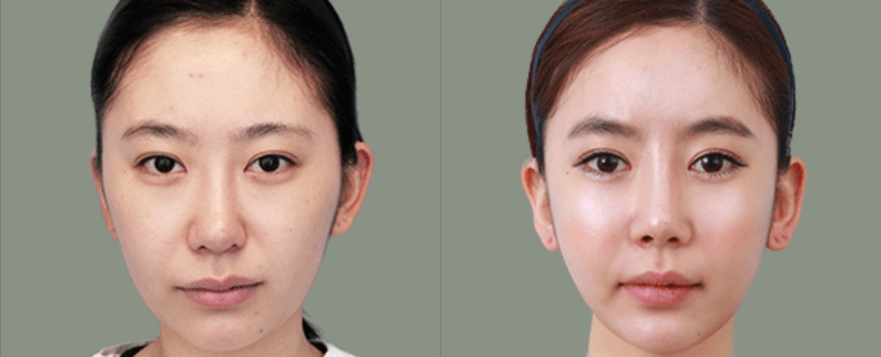
-
Will my skin become lumpy after liposuction?
When excessive amounts of fat cytos are removed or when the fat cytos was removed from one section, the skin may appear lumpy. Our specialized doctor suction the right amount of fat evenly so it doesn’t really happen.
-
Will the skin sag after liposuction?
In order to prevent the skin from sagging, it is important to determine how much fat removal is required, and delicately designed so that the surface of the skin does not look out of proportion. Also it is important to wear compressive garment well to prevent from skin sagging.
-
Will I regain weight or fat after liposuction?
The actual fat cytos was suctioned so you won’t regain weight as much as before the surgery. However there are still left over fat cytos and if you are not managing yourself those fat cytos gets bigger then it might look you gain weight. So we recommend you to exercise and manage yourself to see better result.
-
Do side effects include severe swelling?
The surgical region after liposuction can be inflamed and bruised for a week. The skin and the tissues under the skin can harden from scar tissue formation but it will gradually subside.
Bruising and swelling, to a certain degree, are expected post-surgical side effects.
These side effects will improve over a week, but it will take a few months to eliminate hardened scar tissues.
We recommend our patients to keep active and go for light strolls to reduce the swelling. -
What are the steps involved with liposuction?
Depending on the area, we generally melt the stored fat cells and then remove it with a cannula suction. This way, we are able to avoid unnecessary tissue damage and nerve damage. We recommend compression clothing to our patients which helps reduce swelling and molds a slimmer body line. These compression wear are tailored for each individual patients and it may be extremely tight and uncomfortable at first but should be worn for at least 2-3 months.
-
How much fat can be removed?
Fats should be removed in moderation because gratuitous amount of fat removal is not necessarily healthier nor aesthetically pleasing. Also, sudden fat loss can cause the saggy skin. As we can’t remove the whole fat cytos as your body need it, after doctor’s diagnosis, the right amount of fat will be removed depends on your skin type and your body condition.
-
Is it compulsory to wear compression clothes?
For 1st month after the surgery, patients has to wear compression clothes for 24 hours. After that, Patients are advised to wear compression clothing for at least 2-3 months to see better effectiveness of the surgery. Compression clothes helps to subside the swelling and prevent from the skin sagging so it is recommendable.
-
How soon can the results be noticeable after liposuction?
The results will not be noticeable immediately after liposuction. Swelling and bruising will be apparent for a week to two weeks after the surgery and it will be subsided over time. The skin will begin to tighten and the patients' body will begin to slim down over 2-3 months.
The slimming effect will show differently depends patient’s conditions and healing process. -
Will my weight be different?
Liposuction essentially removes fat cytos from the body, allowing for significant weight loss.
You will see the difference with your weight and especially when you look at the mirror the line will be changed. -
When will I be able to return to my daily activities?
Swelling will subside for a week but there should be no issues with returning to daily activities.
After 5 days, patients will be able to return to their work place.
Usually, local anesthesia or sleep anesthesia are administered, thus patients are able to be discharged on the same day. -
Are you afraid of breast surgery’s side effects?
No need to be concerned if there is an accurate analysis and reliable prevention!
-
What is capsular contracture?
When foreign substance comes into our body, the human body enhances the immune system to generate fibrosis cytos and produce the collagen fibers. These collagen fibers surround the implant and create a coating called capsule. It is a natural symptom but due to wrong foreign body reaction, infection, bleeding and other causes may thicken, turning into a hard capsular contracture. When capsular contracture occurs, the breast tissues become hard, distorts the shape and can even dislocate the implant.
-
What are the causes of capsular contracture?
Capsular contracture may occur due to various reasons such as bleeding, hematomas, necrosis tissue, foreign body reaction to silicone, infections caused by bacteria, immune deficiency and improper post-operative massage.
-
When does capsular contracture occur?
Capsular contracture usually occurs within 4-8 months after surgery, about 60% within 6 months, and about 30% within 6-12 months after surgery. It rarely occurs 3-4 years after surgery so it is very important to manage properly right after surgery.
-
[ Upper Convex ] There is an upper convex on the breast !
What is an upper convex?
It is referred to as convex nipple and convex implant as a side effect of capsular contracture due to improper implant
placement or poor post-operative care.
Why does upper convex occur?
Usually, it occurs when the line under the breast’s delamination is not enough or oversized implants are inserted with not enough tissue to cover the implant. Also, the implant may have moved up due to improper post-operative care after surgery.
-
Prevention of side effects
After surgery, the method of massage and post-operative care period is all different on all individuals. However, the most important common fact for all patients is to follow the capsular contracture and upper convex prevention training from the clinic for at least 6 months. Of course, it is inconvenient to wear the compressive bra and to do the self-massage but it is required for utmost surgical outcomes.
-
Won’t my new breasts look noticeably fake?
Wonjin is the best plastic surgery clinic in Korea for breast surgery.
Our doctors have the skills to make any implants to look real and natural.
-
My chest protrudes and I’m flat chested. Would breast surgery make it too obvious?
Our goal is to make your breasts look as natural as possible.
See the results yourself from our patients’ reviews
-
Can I breastfeed after surgery?
Mammary glands are untouched and avoided for healthy and safe breast feeding.
-
Post-surgical care is more stressful?
Massaging is not required anymore due to medical advancement in breast augmentation. There are also scar treatments available at Wonjin, thus there is nothing to stress about.
-
Will my face really become smaller if I have the square jaw surgery?
It can’t make the whole face slimmer but as jaw bone is reduced, you can have slimmer and smaller jaw line.
-
Don’t I need a separated surgery of square jaw reduction and Front Chin surgery?
No, you don’t. You can have square jaw and front chin surgery at the same time and even with cheekbone reduction.
-
Won't that leave rough angles?
It will not happen if the surgeons have enough experience and skills. As our surgeons have lots of experiences and great skill, it won’t leave those angles. That is why you have to choose right hospital for your surgery.
-
Won’t my nerves on the chin become dull?
Such complications won’t happen if the surgeons have enough experience and skills. As surgeons in WONJIN all have at least 10 years of experience within their fields, they’ll perform the surgery after a detailed analysis of your bone structure to minimize the possibilities of side effects.
-
When can I go back to the daily activity?
Although it really depends on each patient, the swelling appears for the first two days and gradually subsides. 80% of swelling will subside after 7 days. Generally, daily activities are possible in about 7 days, and for those with jobs that require a lot of talking, daily activities are possible in about 2 weeks.
-
Will it cause the sagging of the cheeks?
Sagging cheeks after surgery is a side effect of cheekbone reduction, not square jaw reduction. Spin-carving of Wonjin makes micro incision inside mouth and thus strictly avoids the sagging of cheek. This even reduces the muscle inside skin to form an elastic side chin.
-
My front chin is a little retreated, is Front chin surgery suitable for me? Or implant insertion?
Depends on the bone structure and your overall facial ratio, the recommended surgery is different so an accurate consultation is essential.
-
Will I get wrinkles or lumps after the front chin surgery?
No need to worry about these if the surgeon has carried out the surgery in a precise manner. Lump or wrinkles may appear sometimes after a Front Chin surgery. This is a side effects resulted by an inexperienced surgeon. When the front chin is fractured, the muscles around will also be cut together. At this point, Wonjin accurately rearrange not only the bones but the muscles together to form a smooth and well padded front chin without any wrinkles.
-
Implants or Fat Graft? Which is better?
It depends on your personal preference. If you want to have permanent effect, implant is more recommended. If you don’t want any foreign body in your face, fat grafting is recommended. However depends on your facial condition and your concern, the recommended surgery can be different.
-
Won’t the forehead surgery cause hair loss?
Hair loss hardly occur as a micro incision of 2~3mm around the hair line boundary does not damage the hair. Also, any hairstyle including tying a pony tail is possible after surgery due to invisible scars.
-
Won’t the facial expression become awkward if an implant is inserted?
No it won’t. the custom-made implant will be inserted and it is designed as your bone shape so it won’t look awkward.
-
My face became rather big after Cheekbone surgery!
Cheekbone reduction should maintain the face volume instead of blindly reducing the bones. As to that the understanding and aesthetic sense of the surgeon is highly required.
-
My cheeks are saggy after cheekbone surgery!
Cheeks may become saggy due to opened cheekbone gaps if the skin are overly exfoliated or the bones are not properly fixed after surgery during the cheekbone surgery. Wonjin resolves the problem factors of cheek sagging by firmly fixing the bones at their proper position through revision. Lifting procedure is added to improve the elasticity and volume as the soft tissues are stretched together with the saggy cheeks.
-
When can I do revision as I want to fix it as early as possible!
A rush revision is a cause for other side effects. Commonly, it is most appropriate to proceed the revision after 6 months when the damaged bones and organization due to the first surgery are completely healed.
-
#01. My nasal bridge is curved. Will I need a separate surgery to correct the deviation?
A: An overgrown septal cartilage can make the nose look deviated. Usually, the surgery for the deviation, which is to fracture the nasal bone, is performed simultaneously with nasal tip surgery.
-
#02. My nose has both hump and droopy tip. Will the surgery be difficult?
A: There are many cases where people with humped nose have high nasal bridge. In this case, the nasal slope can be simply improved my shaving the hump and raising the nose tip. However, for those who have wide nasal bridge, lateral osteotomy is necessary. Since the surgery could get quite complicated, it is very important to select a highly experienced surgeon.
-
#03. My nose gets congested often. Is this treatable?
A: More than half of the patients who suffer from chronic rhinitis and sinusitis have deviated septum. Even if the deviation may not be seen from the outside, there’s a big possibility that the septal cartilage is bent, blocking the airway causing rhinitis and infections. Yes, it can be treatable with our ENT surgery.
-
#04. Is it true that my hump can grow back?
A: Not at all times. Due to our bones’ regenerating capabilities, the hump can slightly grow back. However, if the fracture is properly done, the reoccurrence is preventable.
-
#05. Does the hump have to be fractured?
A: Many people might think it’s dangerous, but fracturing the hump is the most effective solution to prevent the hump from growing back again. Please note that fracturing the nose is not as dangerous as many people think. There are only a few blood vessels and nerves in the nasal bone, and when the surgery is done by a highly skilled surgeon, the surgery outcome will be satisfactory.
-
#06. Can just the nose tip be corrected?
A: If the patient has high nasal bridge and the problem is only the droopy nose tip, then yes, the nose tip can be simply raised through autologous cartilage. It can be done if the nose does not need big modifications.
-
#07. Are succession rates low for revision surgeries?
A: The nasal tissues are damaged immediately after the surgery and it takes 6 months for them to recover. Revision surgeries does not mean that it will trinity the skin or damage the immune system. If done well with the right materials, it can correct the defects made from the previous surgery. However, since they’re more complicated than the initial ones, surgeons have to be more careful and meticulous in dealing the revision cases.
-
#08. What if the implant is noticeable?
A: Implant projection is not the problem with the implant, but rather has more relations to the surgeon’s skill and techniques. The implant is only noticeable if it’s too high or narrow for the patient’s nose. Therefore, the surgeon has to design and re-shape the bridge into a narrower width for the implant to fit.
-
#09. Why does my nose look pinched after the surgery?
A: The nose can look pinched and unnatural if the nasal cartilage is tied too tightly or if the skin is too thin.
In order to prevent such unnaturalness, transparency and deformation, the cartilage should be designed carefully, and should be wrapped with artificial tissues.
-
#10. What if my nose tip becomes hard after the surgery?
A: Hard nasal tips are often due to implant insertion on the tip area. Wonjin uses soft autologous tissues such as ear and septal cartilage and each have its advantages. Septal cartilage is harder than the ear cartilage, and it is suitable in sustaining and supporting the nose tip. On the other hand, ear cartilage is softer and more flexible, suitable in making a round, natural nose tip.
-
#11. Which is better? Silicone implant vs. Gore-tex?
A: Both materials are natural and safe. However, silicone is easier to be removed during revision surgery.
Gore-tex tends to integrate more with the skin tissues with its porous component, and therefore, is hard to be removed.
-
#12. Can my bulbous nose become sharp?
A: Yes of course. Bulbous nose can become slim and refined through tip plasty.
-
Don’t double eyelid formed by non-incision method easily get released?
It was a long time ago and became a history. However, why do anxieties and revisions still increase continuously? The ordinary non-incision method to “pinch” the eyelid possesses high possibility that the double eyelid will be released. In Wonjin, we don’t form double eyelids forcibly. The natural fascia fixing method in Wonjin forms natural double eyelid by inducing the inner skin to stick together. Moreover, the number of knots tied dual-prevents the double eyelid from releasing. Go to Non/Partial/Total Incision
-
Is Ptosis Correction necessary for drowsy-looking eyes?
Many are diagnosed to do Ptosis Correction just because they have drowsy-looking eyes. However, unless the eyelid covers more than 1/3 of the pupils, natural muscle fixing method can be used to correct the drowsy-looking eyes.
-
Can I make bigger eyes without double eyelid?
The answer is “YES”. The reason to this answer is because bigger eyes can be made through natural muscle fixing method without relying on the double eyelid.
We proceed this kind of surgery commonly for male patients or those who doesn’t want a big change on the impression. In this case, it is utmost to utilize his/her individuality.
-
Won’t the thread be seen unevenly?
The surgery outcome is completely different depending on the surgeon’s ability, even if same type of thread is used. Human’s eyelids are thin and weak, therefore detailed skill is needed.
Wonjin inserts thread into the skin through tiny holes without incision to prevent irritation on the skin and inflammation. Because the knots are tied deep inside the eyelids and the double eyelids are formed smoothly along the eye lines, you can be rest assured that the scars and stitches can’t be seen mostly.
-
Is non-incision method limited to thin-eyelid people?
It is mostly possible unless the eyelids very thick, and people of age from 20~30 prefer this method.
The disadvantage of non-incision method in existence was that only the strength of thread was used to lift the skin and muscle as a lump. As the result, the thread was easily released when it becomes weak.
Wonjin’s double thread-burying method adheres muscle and skin tissues together, and clear eyes can be formed because it fixes the double eyelid line with finer thread.
-
Does partial incision method leaves scars?
Although thick eyelids are incised, the incision slit is very small. Therefore, it is close to non-incision method and the double eyelids are as natural as non-incision method.
The scars aren’t visible as they are hidden by the double eyelid incised along the lines and the scars fade after 3~5 months.
-
Can I use partial incision method instead of incision method?
If you decide to use partial incision method only because you feel obliged for incision, the probability of release is rather high and you can’t get a satisfying result.
If the eyelids are a little thick, fats can be removed by partial incision method. However, it can’t remove the fats as much as incision method and the droopy skin can’t be removed either. Therefore, incision method is effective if the eyelids are rather thick and droopy. Surgery method is decided according to the eye shape and eyelid skin condition, not the scar remaining, swelling or personal preferences.
-
Won’t incision make sausage-like double eyelids?
Seems that many avoid incision method because of anxieties caused by false understandings.
Double eyelid doesn’t become thick because of incision, it is rather depending on the surgeon’s skill in designing the double eyelid lines.
Natural double eyelids can be made according to the initial plan if the incision and suture matches the fine line designed before the surgery.
-
Won’t incision leave scar?
The thought that incision leaves scar is also wrong. It is not the matter of incision, but the surgeon’s ability itself.
Although swelling subsidence and recovery of scar take slightly longer because the incision slit of the incision method is bigger than other methods, the reddish incision scar mostly fades after 3~5 months as much as even specialists can’t differentiate whether it is incision or non-incision method.
This is Wonjin’s skills indeed and the reason why patients can be rest assured to receive incision method.
-
What if the double eyelids become thick?
Lifting a low double eyelid is easy, but skilled technique is needed for making thick double eyelids low.
Non-incision method can be simply corrected by removing the stitches. As for cases that incision has taken place on the other hand, the engrafted tissues should be relaxed and scars should be healed by designing a lower line than the double eyelid in existence.
It is a complicated surgery indeed, but no need to worry so much since the double eyelid lines can be lowered more than half without leaving any deep scars in Wonjin.
-
Can the eyes become much bigger with Epicanthoplasty and Lateral Canthoplasty?
If the vertical length of eyes is originally big, the effect would be better. However, a big change can’t be highly anticipated with canthoplasty only.
Usually, a more dramatic effect can be seen if canthoplasty is done together with double eyelid surgeries.
2~3mm for Epicanthoplasty, 4~5mm for Lateral canthoplasty can be opened to widen the horizontal length of the eyes thus making the eyes bigger and deep.
-
Won’t Epicanthoplasty leave scars?
The inner corner of the eyes is sensitive to scars and therefore incision part and careful design is very important.
It usually leaves white scar as the outer skin of the Mongolian fold is incised.
To overcome this, Wonjin incises a little bit on the conjunctiva in the eyes and sutures towards the inner skin so that scars aren’t visible from outside.
-
Won’t the eyes look too close towards each other?
Wonjin does not focus simply on widening the eye length.
We must consider the balance of exposure of red flesh in the inner corner of eyes and the distance between the glabella when doing the Epicanthoplasty.
A slight difference of 1mm can overly expose the red flesh or the eyes might look to close towards each other. Therefore, Epicanthoplasty is recommended only when it is needed and the balance should be the utmost priority.
-
Can slanted eyes also be corrected?
The main purpose of Canthoplasty is not only making bigger eyes but correcting the shape to make pretty eyes.
If the slanted eyes give a sharp impression, Lateral Hot’z can be done to incise the lower part on the outer corner downwards as an oval shape. This way, a much cuter impression can be formed.
-
Won’t the lateral canthoplasty stick back to its original state after some time?
The tissues often stuck back again during the recovery stage after canthoplasty surgeries in existence because the outer skin was incised.
To prevent this, Wonjin incises the inner conjunctiva of the eyes and removes the mucous membrane that sticks skin completely. For this reason, you don’t have to worry about the recurrence.
-
My under eye is dull. Should I remove the fat or do fat reposition?
The cause of under eye dullness is complex, it needs to be treated according to its factors.
If the under eye isn’t so droopy and the fats stick out, the fats should be removed. If the under eye is sunk and it’s dark due to dark circles, fat should be injected or reposition is needed to form bright and smooth under eye.
However, if the skin is extremely droopy due to aging, lower blepharoplasty surgery that removes droopy skin is effective. Although under eye surgery is simple, it should be done by a skilled specialist as detailed incision of conjunctiva on the inner eyes is needed.
-
Is dark circle surgery necessary for people in their 20s?
When aging takes place, dark circles appear when the layer that is wrapping the fat under eye becomes droopy and the eyes are shaded. Dark circles may appear in the 20s if the fat layer is too weak by nature. The dark circles become more obvious when the person is tired and return to its original state when they take enough rest.
Although having dark circles is not a disease, pigmentation will be severe from time to time and the fats could solidify when the elasticity under the eye is lost. For brighter impression, dark circles should be treated.
-
Won’t the fats injected into the under eye areas become bulgy?
Fat filling surgery is rather simple, but under eye could become bulgy or the fats could be easily absorbed if the fats are injected into the skin as common fat filling methods.
In Wonjin, side effects mostly don’t occur as the fats are filled from the deep skin and the reposition of tissues strongly grabs them. In addition, fats from the eye sides are used because they are most similar to the under eye tissues to create more natural and elastic eyes.
-
Is it okay to inject Filler in the love bands?
Some say that filler forms a bulge under the eyes and thus form an unnatural impression, this could be interpreted as “the surgeon is lacking of skill”.
Although love band filler is simply done within 10 minutes, a slight difference of volumes may change the impression. This is why the surgeon’s experience and skill are very important. A cute and natural impression can be created in Wonjin as the skillful surgeon not only fills up the procedure part but also design in detail and raise the volume carefully as if he is correcting the eye shape.
-
What surgery is suitable for droopy eyelids? Upper Blepharoplasty? Ptosis Correction?
Some people are concerned because every surgeon gives a different diagnosis for droopy eyes. Although both ptosis correction and blepharoplasty help the eyes to be wide opened, different surgical method is used depending on the droop level.
If the eyelids aren’t so droopy and the eyes look sleepy due to weak muscles, ptosis correction is appropriate. If it is blepharoptosis that more than ½ of the pupils are covered due to droopy eyelids or the eyelashes poke the eyes, upper blepharoplasty that removes the droopy skin is suitable. Accurate diagnosis is essential as the surgical method may differ according to the droop level of eyelids.
-
Won’t the double eyelids become thick after Upper Blepharoplasty?
Many middle aged people end up having thick and cheesy double eyelids after Upper Blepharoplasty. Commonly, the droopy eyes were removed and the eyelids were made thicker. Wonjin NEVER focuses on making the double eyelids.
As the aim is to make the eyes open comfortably and clearly, droopy muscle in the skin is tightly corrected to grow the size of the eyes. Therefore, a younger impression can be formed with thin double eyelids or without double eyelids so there is no need to worry.
-
I seem to frown every time I open my eyes. Can it be fixed?
You need ptosis correction if you habitually frown on your eyebrows and forehead every time you open your eyes because they can’t be opened comfortably.
Ptosis is recommended when the levator muscle is weakened due to aging, this can be fixed by shortening the droopy levator muscle of the Upper Blepharoplasty to prevent droopy eyes and thus baby-face effect can be gained as the forehead wrinkles are also eliminated.
-
Won’t the removal of droopy fat leave scars?
A natural effect depends on the moderation and how the suture is done even if the same skin removal is needed. Droopy under eyes that sticks out due to aging will be corrected with lower blepharoplasty.
The skin right under the eyes is very thin and weak so incision area will be bruised and scarred. Wonjin incises the inner line of under eyelashes instead of the outer skin to remove and repose fats then remove droopy skin, leaving almost no scars.
-
Can I lower my thick double eyelid lines?
Although making double eyelid lines higher is easy, forming lower double eyelids once high double eyelids made by incision method needs extremely experienced skills. Loosening the adhered tissues with minimum scars is important.
If the eyelids are thick, fat should be removed and new lower double eyelid lines should be created without leaving visible scars. Double line correction is made with suitable methods according to the remaining skin amount so there is no need to worry.
-
Is incision necessary for revision if the double eyelids are loosened?
Incision is not necessary if the double eyelids are loosened after non-incision or partial incision eyelid surgery.
If the problem was because fats were not removed although the eyelids are thick or the knot wasn’t properly tied, it can be tightly corrected with double-tying or partial incision method after making slimmer eyelids. If however, incision surgery was done, correction after an accurate diagnosis is recommended as scars should be removed and a new double eyelid line should be formed.
-
The epicanthoplasty is overly done. Can I reduce it again?
This surgery needs a highly sophisticated technique as to its difficulty. Wonjin minutely reconstructs the Mongolian fold that has been overly cut.
The tissues around the front edge is removed and attached in a Y-shape. At this point, minimizing the damage of tissues and scars and forming a mild impression is important. Revision surgery is done 6 months after the surgery, when the tissues after the first surgery is healed. The outcome is very natural, so you don’t have to worry so much.
-
Do I need a revision surgery if my double eyelid lines are uneven?
Swelling remains even 2~3 months after surgery and therefore the double eyelids may seem uneven.
As the swelling remains until 6 months after surgery, it is hard to judge the eye shape. Therefore, don’t make a rush decision to do a revision surgery. Take some time and observe. If however, the asymmetry is obvious even after 6 months, revision surgery should be considered through accurate diagnosis.
languages

